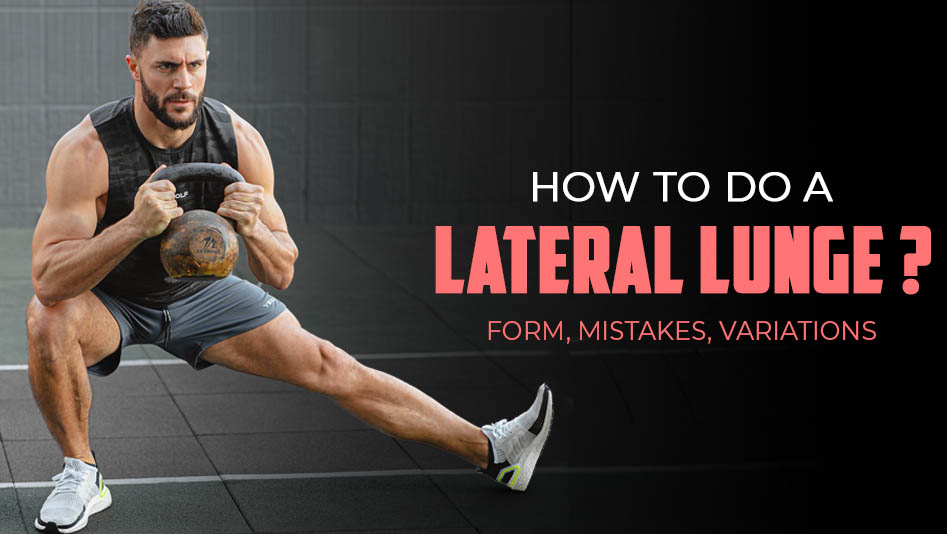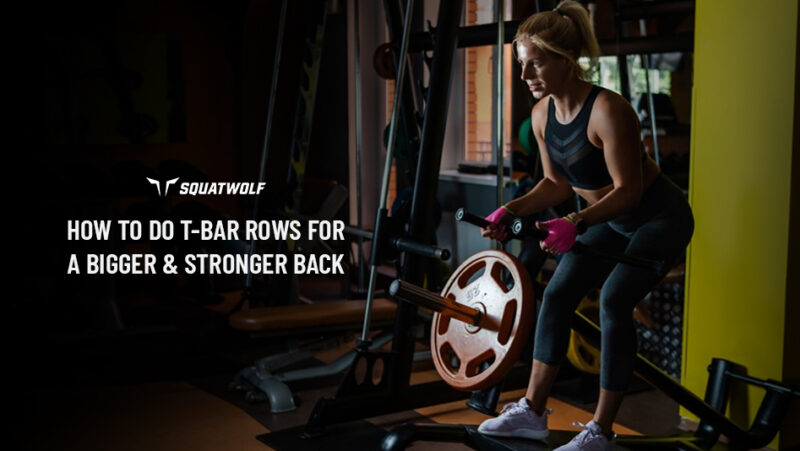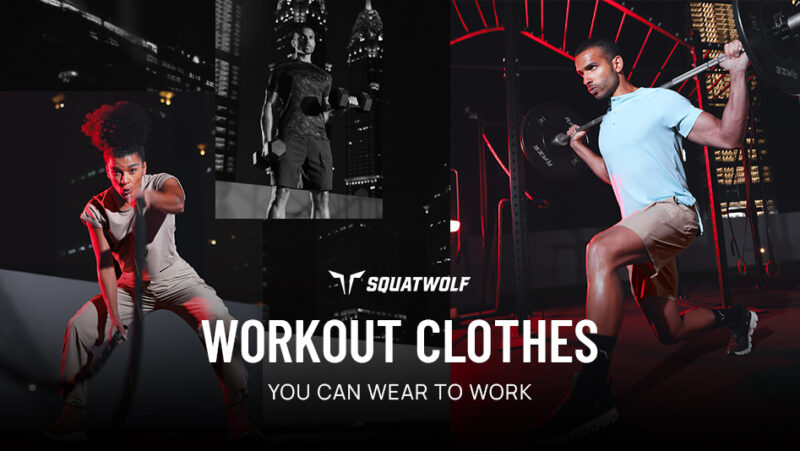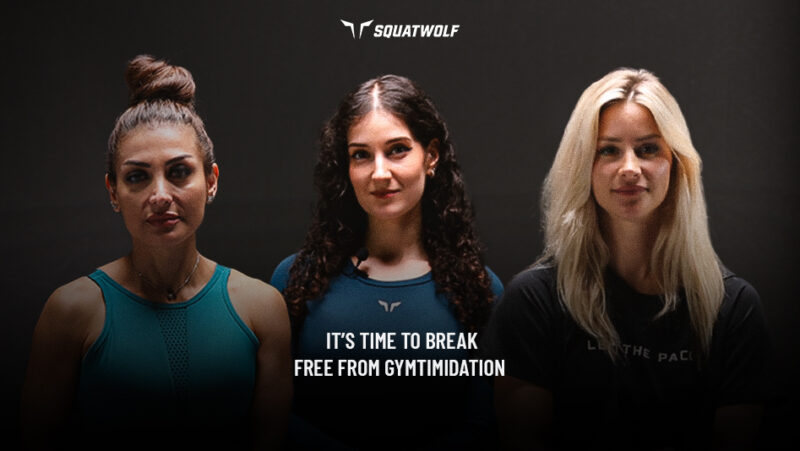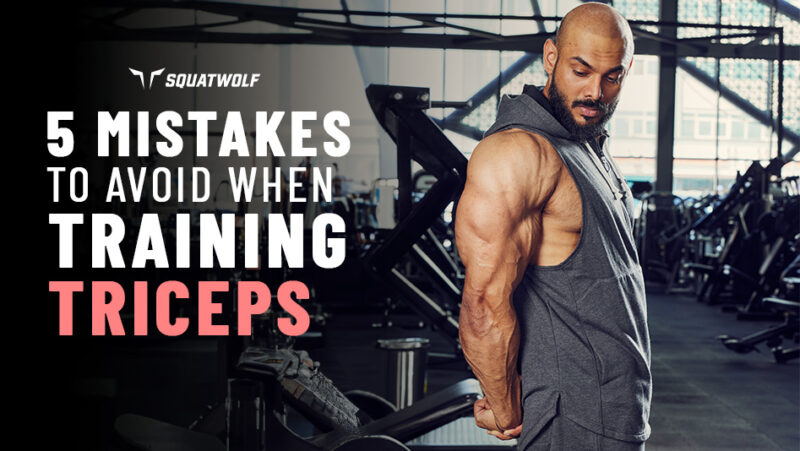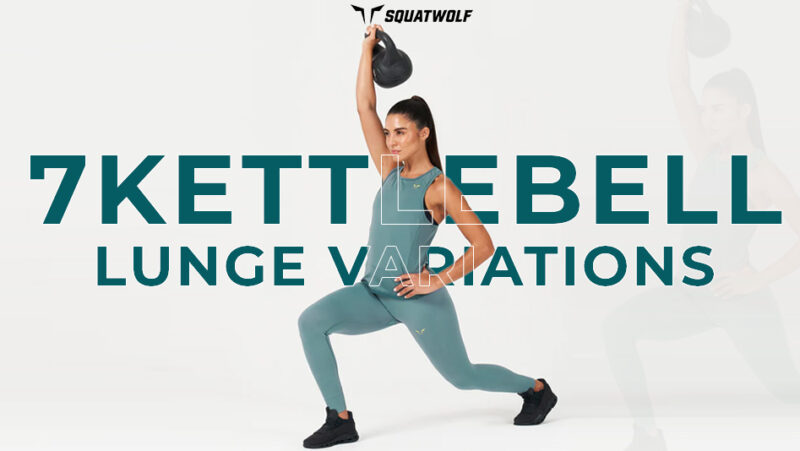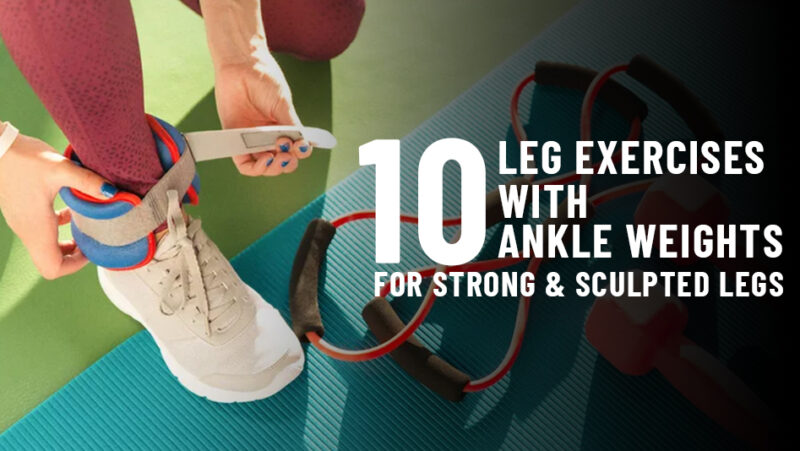Lateral Lunges: A Quick Overview
Lateral lunges offer a dynamic approach to strengthening your lower body. In this guide, you’ll dive into the essentials of lateral lunges, understanding the muscles they target, mastering the correct technique, and exploring their myriad benefits. Whether you’re aiming for athletic prowess, knee health, or just spicing up your routine with variations, lateral lunges are your go-to.
If you’re looking for a full lower body workout program without weights, then you can also go for resistance band leg workout.
Lateral Lunges | Muscles Worked | Benefits | Mistakes | Other Lunges | Variations | Workout Program | Key Takeaways
What is a Lateral Lunge?
Ever thought of adding a little side-to-side sizzle to your workout routine?
Enter the lateral lunge – a power move that’s more than just a sidestep in your fitness journey.
It’s a dance between strength and balance, targeting muscles you didn’t even realize needed attention.
A dynamic twist on the classic lunge, this exercise is the secret ingredient missing from your workout menu – in this guide, you’ll find out why!
How To Do Lateral Lunges?
Ready to sculpt your thighs and glutes like you’re Michelangelo? Then get ready to learn all about lateral lunges!
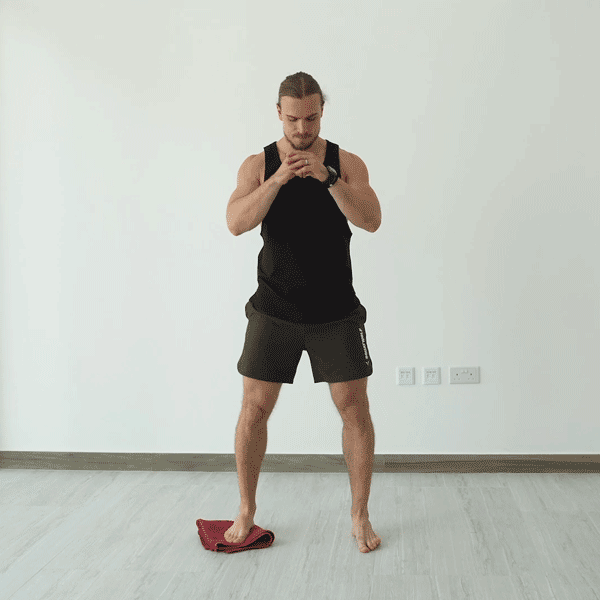
- Position: Start by standing with your feet hip-width apart. Keep your chest lifted, shoulders relaxed, and eyes looking forward.
- Lowering Down: Your feet should be firmly planted on the ground, evenly distributing your weight on both feet. This should be your position throughout the movement.
- Hands Ready: Either place your hands on your sides, or bring them together at chest level – whichever feels more comfortable.
- Sidestep Start: Take a bold step to the left to start the move. Remember, this isn’t a forward lunge, so think of stepping out wide.
- Sink and Stabilize: As you step out, bend your left knee, pushing your hips back as if you’re attempting to sit in an invisible chair. Your right leg should remain straight, and both feet stay flat on the ground.
- The Knee: Here’s a key point: Your bent knee (left knee, in this case) should align with your left foot. It shouldn’t jut out past your toes. This protects the knee and maximizes muscles engagement.
- Engage the Core: As you sink into the lunge, tighten your core muscles. This helps in maintaining an upright posture and provides stability.
- Pause and Power Up: Once you’ve gone as deep into the lunge as you can, pause briefly. Then, push off with your left foot, returning to your starting position.
- Switch it Up: Now, simply repeat the process, this time lunging to the right side.
- Repeat: Aim for a set of 10 repetitions on each side, gradually building up as your strength and endurance improve.
Pro Tip: Always remember, form trumps everything. It’s better to do fewer lateral lunges with the right form than many with a compromised posture. If you’re at an intermediate to advanced level in your fitness journey, you can incorporate weighted lateral lunges into your leg workout routine.
Key Muscles Engaged in Lateral Lunges

Lateral lunges are a powerhouse move that engage multiple muscle groups in your legs.
Glutes
When you take that side step and sink into the lunge, your glutes (or butt muscles) are doing a lot of the heavy lifting. They’re responsible for stabilizing the pelvis and providing the power to push you back up to your starting position.
Over time, consistently performing lateral lunges can help sculpt and tone this area, giving you the bubble butt you want.
Quads
Your quadriceps, the muscles at the front of your thighs are hard at work during lateral lunges. As you lower into the lunge, this muscle stretches and controls the movement, and then contracts to help you rise back up.
Your quads are essential for protecting the knee and providing stability throughout the movement.
Hamstrings
The muscles at the back of your thighs, the hamstrings provide balance to the quads. While the spotlight often shines brighter on the quads during a lunge, the hamstrings play a supporting role.
Strong hammies help in controlling the depth of the lunge and assisting in the upward push.
Adductors
When you do a lateral lunge, your inner thigh muscles, known as the adductors, are stretched and worked. This group of muscles is crucial for stabilizing the leg during the sideways movement.
Toning the adductors leads to stronger and more defined inner thighs.
Abductors
On the flip side of the adductors are the abductors, which run along your outer thighs. When lunging, they ensure your legs are aligned and don’t wobble inward or outward.
In daily life, strong abductors help with tasks like getting out of cars or sidestepping obstacles.
Core
While you may be focusing on working your legs, the core muscles are secretly and steadily engaged. Your core, encompassing your upper and lower abs, obliques, and lower back muscles, works overtime to keep your torso stable and upright during each lunge.
Over time, lateral lunges can contribute to a stronger, more resilient core.
Primary Benefits of Lateral Lunges
Stepping out to the side isn’t just a change from the traditional forward lunge—it brings a unique set of perks. Let’s get to know the key benefits of lateral lunges:
Strength
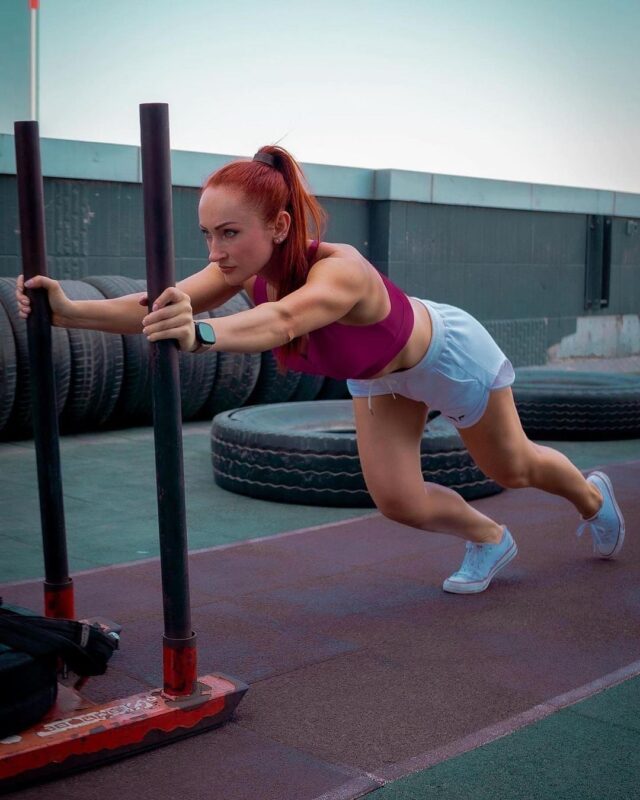
Leaner Legs, Stronger You: Incorporating lateral lunges into your routine helps you build strong lower body muscles. Apart from targeting the major leg muscles, lateral lunges also work the often-neglected smaller stabilizing muscles.
With consistent training, you get stronger and more toned legs. This enhances your overall body strength, making day-to-day activities like climbing stairs a breeze.
Improved Mobility
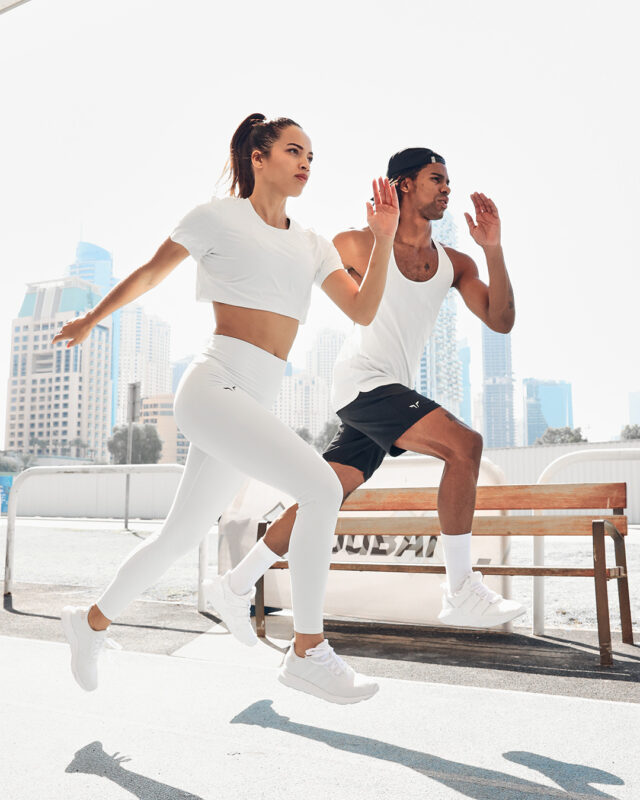
Moving Like a Pro: Life isn’t always linear. We twist, turn, and sidestep every day. Lateral lunges promote hip mobility, allowing you to move with ease in different directions.
This enhanced mobility can be a game-changer for sports enthusiasts or anyone wanting more agility in daily life.
Boosted Flexibility
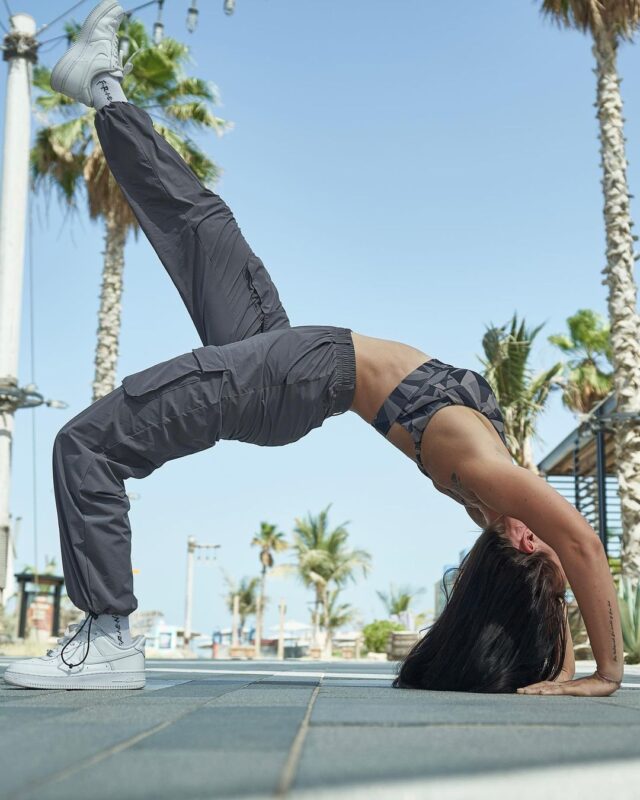
Stretch As You Strengthen: One of the hidden gems of lateral lunges is the dynamic stretch they provide, especially to the inner thighs. By engaging in this exercise, you’re not only building muscle strength but also increasing the flexibility of your adductors.
This is beneficial for preventing strains and promoting better movement patterns.
Common Mistakes and How to Avoid Them
Here are a few common mistakes you should avoid when doing a lateral lunge.
Caved in Knees
- The Pitfall: One of the most common mistakes is caving the knee inwards while lunging.
- The Fix: Always aim to keep your knee in line with your middle toe. Push your knee out slightly when you lunge, so it stays aligned.
Slouched Back
- The Misstep: Letting your upper body slump forward, causing strain on the lower back.
- The Solution: Engage your core. Imagine a string pulling the crown of your head towards the ceiling. This visualization helps maintain an upright, neutral spine.
Narrow Stance
- The Error: Taking too short of a step to the side, reducing the effectiveness of the lunge and straining your knees.
- The Correction: Take a big enough step to the side, allowing your hips to move back and down. Think of it as sitting in a chair that’s placed a bit to the side.
Toes Pointing Out Instead of Straight
- The Slip-up: Not keeping the feet parallel, leading to an awkward and ineffective lunge.
- The Remedy: Both feet should be pointing straight ahead. This ensures proper alignment and reduces the risk of injury.
Improper Foot Placement
- The Oversight: Placing the foot too far ahead or too far back.
- The Antidote: When you step out for your lunge, your foot should land directly to the side of your stationary foot, forming a T shape. It’s like you’re on train tracks—each foot on its line.
Lateral Lunge vs. Other Lunges
The lunge family is vast. Each member brings something unique to the table. The lateral lunge stands out because of its side-to-side movements, as opposed to the typical forward and backward motion of the classic lunge.
This enhances muscle engagement, especially in the inner and outer thighs. Comparatively, forward lunges put more stress on the quads, while reverse lunges tend to focus more on the hamstrings and glutes.
The beauty of the lunge world is that you can pick and choose, or even combine types, based on your goals and which muscles you’d like to target.
Lateral Lunge Variations for All Levels
Spicing up your workouts keeps things fresh and challenging. Let’s explore some exciting variations of the lateral lunge, catering to both beginners and seasoned fitness enthusiasts.
Lateral Lunge With Hops
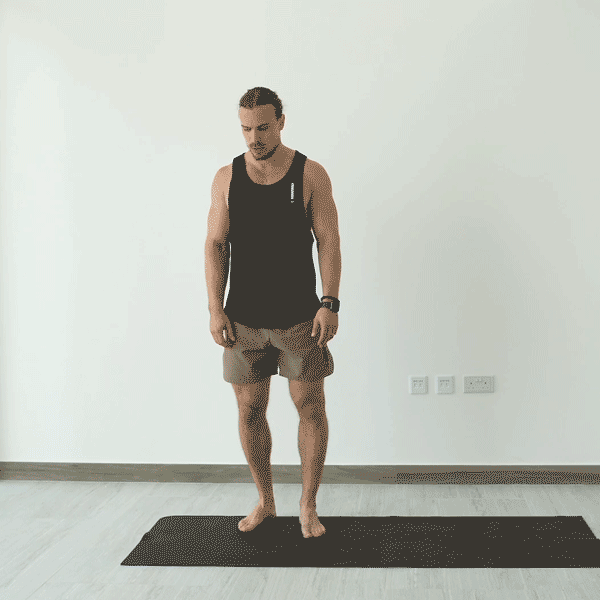
- The Twist: Add a hop as you return to your starting position.
- Why Try: It adds a cardio element to your lunge and helps improve leg strength.
Curtsy Lunge
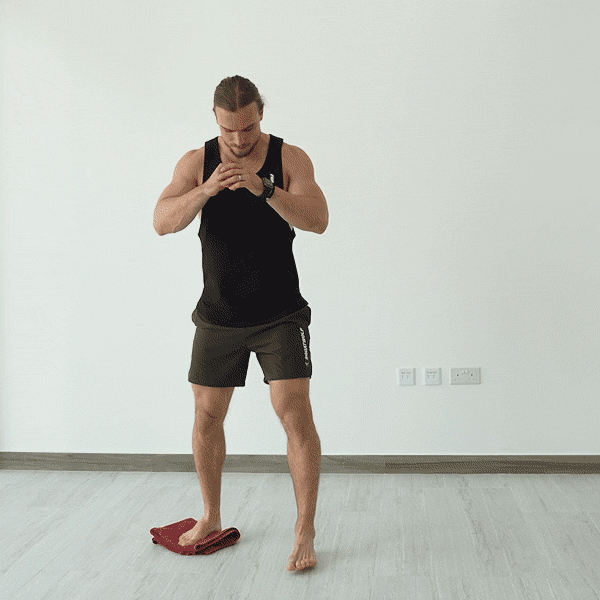
- The Twist: Instead of stepping directly to the side, step your foot diagonally behind the other while lunging.
- Why Try: It targets the glutes from a unique angle, sculpting and strengthening the booty.
Lateral Lunge Programming: Reps, Sets, and Load Recommendations
The beauty of the lateral lunges is their adaptability. Whether you’re striving for raw strength or toned muscles, here’s how you can program your lunges.
For Strength Building
- Reps: 5-8 per leg
- Sets: 4-6
- Load: Go for heavier weights (like kettlebells or dumbbells), maintaining form. Rest for 1-2 minutes between sets.
For Endurance & Muscle Toning
- Reps: 12-15 per leg
- Sets: 3-4
- Load: Use lighter weights or just bodyweight. Control your movement and steady. Rest for 30-45 seconds between sets.
Remember, like any fitness program, the key is consistency and listening to your body.
Adjust the reps, sets, and loads as you progress and always prioritize form over quantity.
With the lateral lunge in your regimen, you’re well on your way to stronger, more agile legs.
Key Takeaway
Lateral lunges are versatile – perfect for pros and newbies. They enhance mobility and strengthen the hamstrings, glutes, and quadriceps.
Include them in your routine for a more powerful and fit lower body!
For a weighted lower body workout routine, read this blog.
Continue Reading

